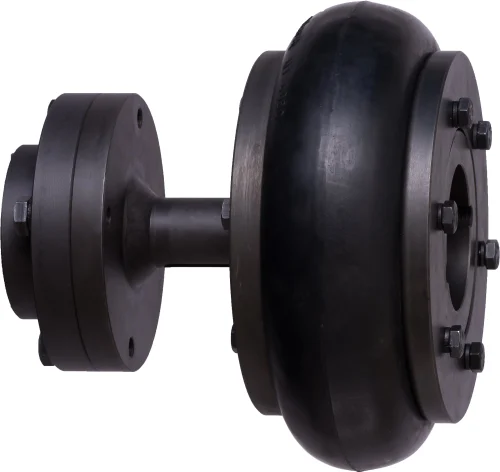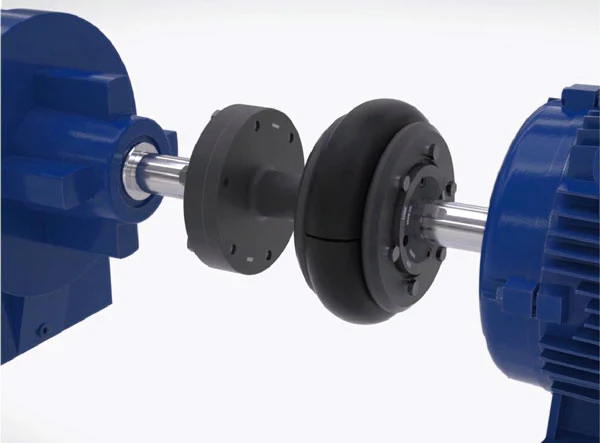Product Description
Propeller Shaft Coupling Vibrator for Magnetic Bracelet Water Couplings Flexible Chain Fluid Flange Stainless Steel Spacer
Application of Propeller Shaft Coupling
A propeller shaft coupling is a mechanical device that connects 2 shafts together. It is used to transmit torque and rotation between the shafts. Propeller shaft couplings are used in a variety of applications, including:
- Marine. Propeller shaft couplings are used in marine applications to connect the engine to the propeller.
- Industrial. Propeller shaft couplings are used in industrial applications to connect different pieces of equipment together.
- Agricultural. Propeller shaft couplings are used in agricultural applications to connect the engine to the driveline.
- Off-highway. Propeller shaft couplings are used in off-highway applications to connect the engine to the driveline.
- Other. Propeller shaft couplings are used in a variety of other applications, such as wind turbines and conveyor belts.
There are a variety of different types of propeller shaft couplings, each with its own advantages and disadvantages. The type of coupling that is best for a particular application will depend on the specific requirements of that application.
Here are some of the advantages of using propeller shaft couplings:
- They can transmit high torque and rotation.
- They are durable and can withstand a variety of harsh conditions.
- They are easy to install and maintain.
- They are available in a variety of sizes and styles to fit different applications.
Here are some of the disadvantages of using propeller shaft couplings:
- They can be expensive.
- They can be difficult to align properly.
- They can wear out over time.
Overall, propeller shaft couplings are a versatile and reliable way to connect 2 shafts together. They are used in a variety of applications and can be a valuable asset in any fleet.
/* January 22, 2571 19:08:37 */!function(){function s(e,r){var a,o={};try{e&&e.split(“,”).forEach(function(e,t){e&&(a=e.match(/(.*?):(.*)$/))&&1
| Standard Or Nonstandard: | Standard |
|---|---|
| Shaft Hole: | 19-32 |
| Torque: | >80N.M |
| Bore Diameter: | 19mm |
| Speed: | 4000r/M |
| Structure: | Flexible |
| Samples: |
US$ 9999/Piece
1 Piece(Min.Order) | |
|---|



Can Spacer Couplings Handle Misalignment Between Shafts?
Spacer couplings are designed to handle some degree of misalignment between shafts, but their capacity to do so depends on the specific coupling design and the magnitude of the misalignment.
Unlike flexible couplings, which can accommodate significant misalignment through their elastic properties, spacer couplings are generally less forgiving when it comes to misalignment. However, they can tolerate limited angular, parallel, and axial misalignment.
The amount of allowable misalignment for a spacer coupling depends on factors such as:
- Coupling Design: Some spacer couplings, such as the sleeve or muff coupling, have relatively more flexibility and can handle more misalignment than others.
- Coupling Size: Larger spacer couplings may have a higher misalignment capacity than smaller ones.
- Material: Certain materials used in manufacturing spacer couplings may provide some level of flexibility to accommodate misalignment.
- Application Requirements: The specific needs of the application, including the type of connected equipment and the expected operating conditions, will influence the acceptable misalignment range.
It is essential to consider the manufacturer’s specifications and recommendations when using spacer couplings to ensure that the misalignment falls within the permissible limits. Excessive misalignment can lead to premature wear, increased vibration, and reduced coupling life. Therefore, precise alignment during installation is critical for optimal performance and longevity of the spacer coupling and the connected machinery.

Factors to Consider When Choosing a Spacer Coupling for a Specific System
Choosing the right spacer coupling for a specific system requires careful consideration of various factors to ensure optimal performance and reliability. Here are the key factors to keep in mind:
1. Operating Conditions: Understand the operating conditions of the system where the spacer coupling will be used. Consider factors such as torque requirements, rotational speed, temperature range, and environmental conditions (e.g., corrosive, humid, or dusty environments).
2. Misalignment Compensation: Determine the type and magnitude of misalignment that the coupling needs to accommodate. Spacer couplings can handle angular, parallel, and axial misalignments to varying degrees, so selecting the appropriate coupling design is critical.
3. Shaft Sizes and Types: Ensure that the spacer coupling’s bore size matches the shaft diameters of the connected equipment. Additionally, consider whether the shafts are keyed, splined, or have other special features that may require customization of the coupling.
4. Coupling Material: The choice of material for the spacer coupling depends on the application’s requirements. Common materials include steel, stainless steel, aluminum, and various alloys. Consider factors such as strength, corrosion resistance, and temperature limits when selecting the material.
5. Torque and Speed Ratings: Determine the required torque and rotational speed ratings for the coupling based on the power transmission needs of the system. Select a coupling that can handle the specified torque and speed without exceeding its limits.
6. Spacer Length: The length of the spacer in the coupling affects the distance between connected equipment. Ensure that the chosen spacer length allows for proper clearance and alignment between the components.
7. Installation and Maintenance: Consider the ease of installation and maintenance requirements of the spacer coupling. Some couplings may require more frequent maintenance than others, which can impact overall system downtime.
8. Cost and Budget: Evaluate the cost of the spacer coupling and ensure that it fits within the project budget. While cost is a consideration, it is essential not to compromise on quality and performance for the sake of cost savings.
9. Industry Standards and Regulations: Ensure that the chosen spacer coupling complies with relevant industry standards and safety regulations. Adherence to these standards helps guarantee the coupling’s quality and suitability for the intended application.
10. Supplier and Support: Choose a reputable supplier with a track record of providing high-quality spacer couplings. A reliable supplier can offer technical support, assistance with selection, and post-purchase services if required.
By carefully considering these factors and evaluating the specific needs of the system, engineers and designers can select the most appropriate spacer coupling to ensure efficient power transmission, reduce wear on connected equipment, and enhance overall system performance and reliability.


editor by CX 2024-04-22
by
Tags:
Leave a Reply